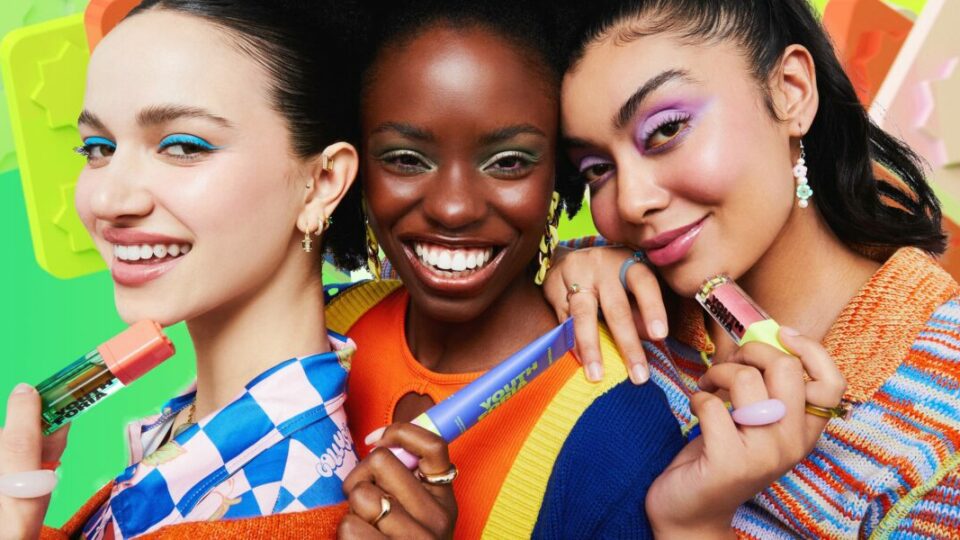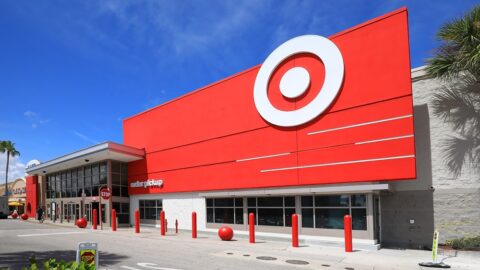“Direct to consumer” is so 2022. This year, DTC has a new meaning, or at least an alternate one — “direct to community.”
This new form of DTC is built on and grows alongside a strong, vocal community of consumer advocates that engage in regular, reciprocal conversations with the brands they buy from.
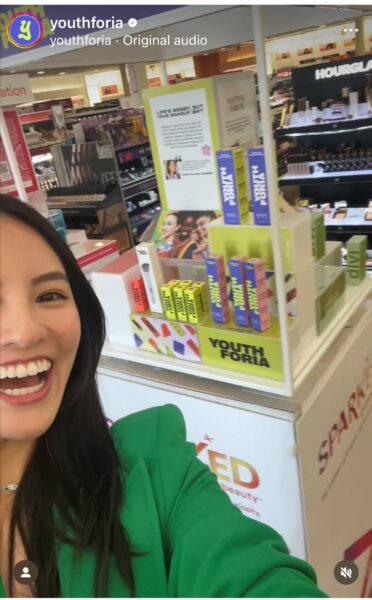
“We’re seeing businesses behaving more like creators in some ways, using organic content to source feedback from customers, not just as a marketing strategy, but to inform their business,” said Katherine Shappley, VP of Meta’s Commerce Business Group at a recent media event. “In the past brands targeted a broad audience with the same message. Now in this direct-to-community era they’re really looking to their customers for feedback. They’re using authenticity to fuel their product and marketing strategies, and growing from the bottom up using that intelligence. And they’re using ads and tools like groups and live videos and comments to help identify their most loyal customers and develop products that meet the needs of the community.”
It’s an exciting development — especially for young brands trying to get off the ground — and it wouldn’t be possible without the right ecosystem, in this case social media.
Every day on platforms like Meta’s Instagram and Facebook, brands are going beyond selling by building relationships with their customers. One brand that has perfected the craft of community building is beauty startup Youthforia. Born on Instagram in April 2021 in the depths of the pandemic, the brand already has a thriving online business via its website and Amazon. Then, in October 2022, just 18 months after launching, the brand made its brick-and-mortar debut at Ulta Beauty.
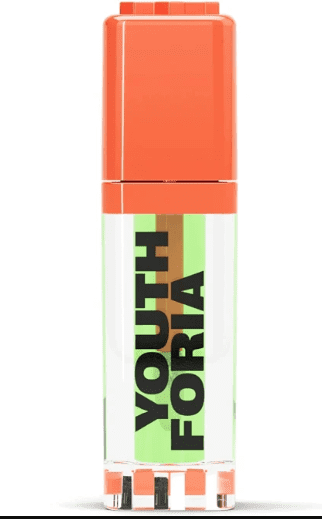
The company is centered on its Founder and CEO Fiona Co Chan, who also stars in much of Youthforia’s social content. The premise is “makeup you can sleep in,” and to test it Chan herself slept in all the first lab samples. The brand’s biggest product is a color-changing blush oil that reacts to the pH of users’ skin to create the perfect shade.
“This was such a unique concept for blush, so a lot of our early videos were just me comparing this blush to different existing formats,” said Chan. “I started off with maybe 500 followers, they were probably all my friends. But there was such a curiosity about the product, because it is so unique, that we really started to grow our community.”
That use of the word “community” instead of “following” hints at the key to Youthforia’s rapid ascent. Without a doubt there’s a certain made-for-social-media entertainment factor to the product (like mood lipsticks in the ’80s, except it actually works and looks good). But while that’s enough to go viral, it’s not enough to build a lasting brand — and it’s certainly not enough to get picked up by the largest beauty retailer in the U.S. There’s clearly something more going on here, and at least part of it is how masterfully Chan has tapped into her social media “community.”
‘It All Goes Down in the DMs’
Like many young CEOs today, Chan doesn’t believe in sitting cloistered away in a (metaphorical) corner office. She is down on the ground with her customers — listening and learning.
“We communicate with our community,” Chan said. “It is very driven by the DMs [direct messages], whether that’s on Instagram or Facebook or elsewhere, and what’s been really great about that is we get direct feedback instantly. I use a lot of the questions that we get to create content. A lot of our most engaging, best-performing ads came out of community-driven questions.”
In fact, one of the brand’s first viral videos wasn’t one Chan created — it was an unsolicited customer testimonial. And Youthforia’s customers have continued to turn out for the brand ever since.
“A lot of it really does go down in the DMs — we’ve built and kept a lot of those relationships pretty one on one,” said Chan. “And what’s great about this community that we’ve built is they will go out and support us. For our launch [at Ulta] so many customers came out specifically just to support us in the stores, and as a result we exceeded our Ulta forecast.”
Chan expects digital channels to remain crucially important even as Youthforia builds its brick-and-mortar presence. “We leverage our community on social to drive awareness for all of our new channels,” she said. “Makeup is a category that I think always has to be omnichannel. You want to see that it works with your skin tone and skin type. So even though we’ve gotten a great audience by growing just digitally, as soon as we were able to be in physical retail, we saw huge growth in our business. But a lot of our success initially with Ulta has been from this community that we’ve built [online] over the last year and a half.”
Chan leverages this social community to inform multiple aspects of the business, in particular product development. For example, as a socially and environmentally conscious brand, the ingredients that go into Youthforia’s products are critically important, so as soon as a customer lets Chan know of a particular allergy, “I make note of it, and every future product probably won’t have those ingredients. If you’re DM’ing me about any concerns, I take that into heavy consideration for all of our future product development. [Social media has] been a great learning ground for us to figure out what people are concerned about, especially when we’re going into a new category.”
Meta’s Shappley said that feeling heard by brands is becoming increasingly important to many consumers. “People are really looking to develop more genuine relationships with the businesses that they buy from,” she said. “We saw this during the pandemic, and we’ve certainly seen it continue. [For example, we know that 26% of global consumers want to shop from brands that share similar beliefs and values as they do, and 36% of them want to shop from a brand that cares about their opinion.”
The New Market Research: Social Listening
As it is for most brands these days, Youthforia’s social content is increasingly centered on video. “Because our product is so demonstrative — you can see it work in a few seconds — video really helps with growth,” said Chan. “As soon as Reels [Instagram’s TikTok-style video feature] became a thing, it really drove the growth of our business. It was about two months into the life of our business, and some of our very early viral videos were our best-converting organic content. Now we supplement everything that works well using ads, so we’ll always test first with organic and then put ad spend behind it.”
This idea — testing marketing content by seeing how it performs organically first and then putting money behind the content that performs well — highlights how sophisticated users are now leveraging these platforms, not just as megaphones but as a testing ground to inform messaging and business strategy.
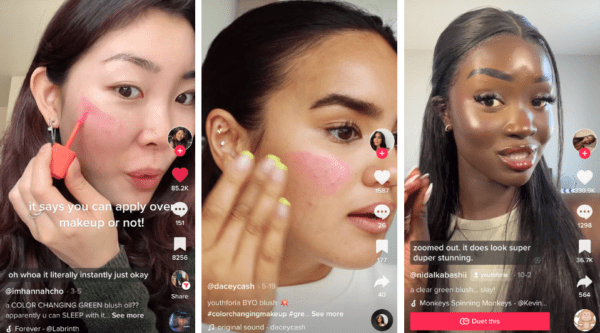
At Youthforia, Chan uses this social feedback not just to decide what content is worth boosting, but also to build out product content for other uses like product detail pages (PDP). Another one of her best-performing pieces of content was a private video her mom sent her, just to show off how good a product looked. Chan turned it into a post, which ended up accounting for almost 80% of content-driven conversions for the product she was showcasing. Now it also appears on that product’s PDP pages.
“We really think about this short-form content as the starting point for all of our content creation,” Chan explained. “Whatever works well on social, that’s what trickles down into our PDPs. Even in some of these places where content should be a little bit more polished, we’re seeing now that that UGC [user-generated content] style of content performs better on our own DTC website and on our retailers’ websites.”
Chan’s biggest tip for other brands looking to build this same kind of connection and community is to be true to yourself. “Just be authentic,” she said. “A lot of our growth came when we shared something unique — either why we created the products or the experiences that I was going through as a first-time founder, sharing the wins and the losses. I’ve used [Instagram] almost as a diary. Having a one-on-one channel with your community as a founder is incredibly rare. It’s nothing I ever experienced when I was growing up, and it’s really special to be able to do that now.”



